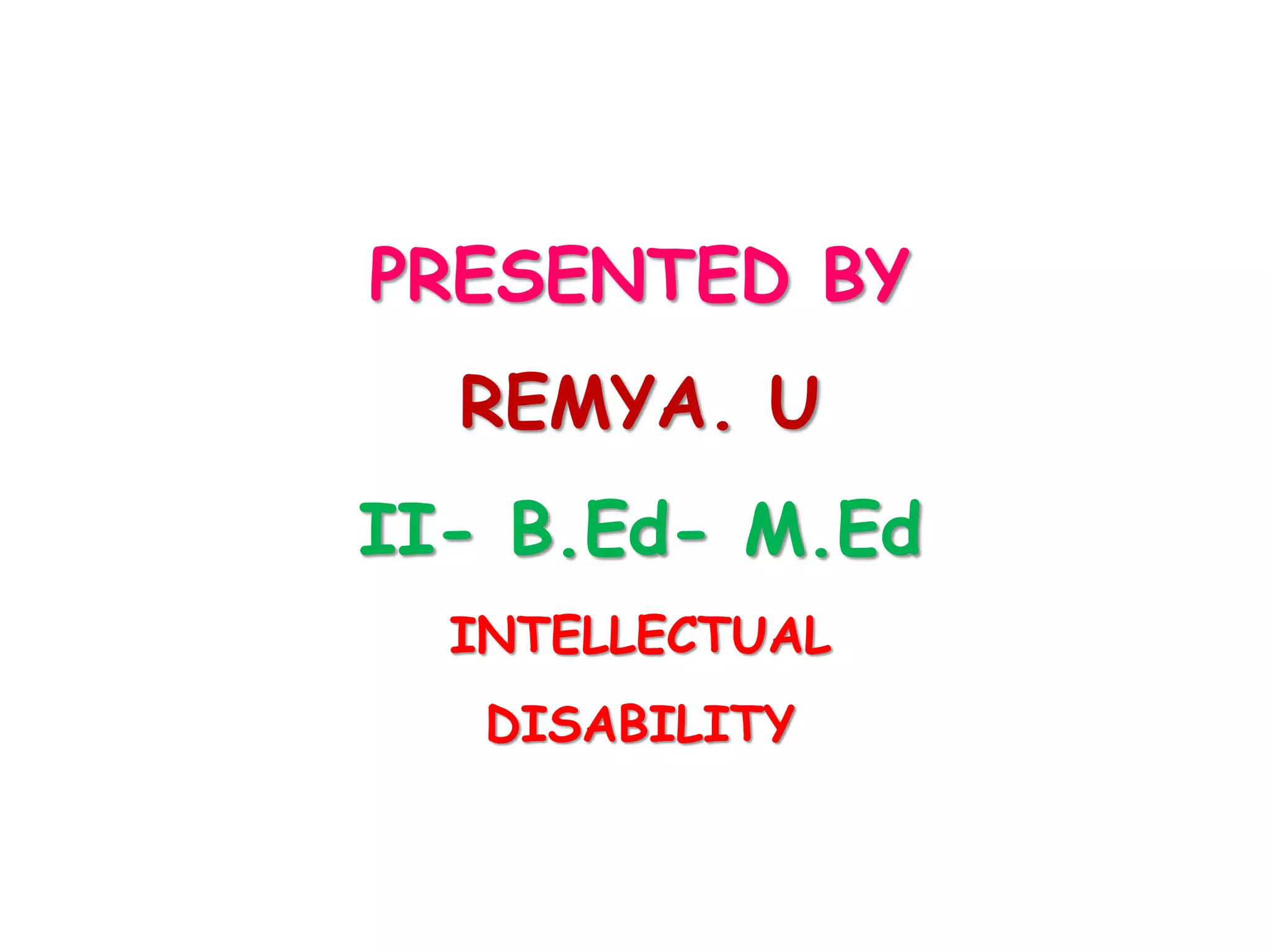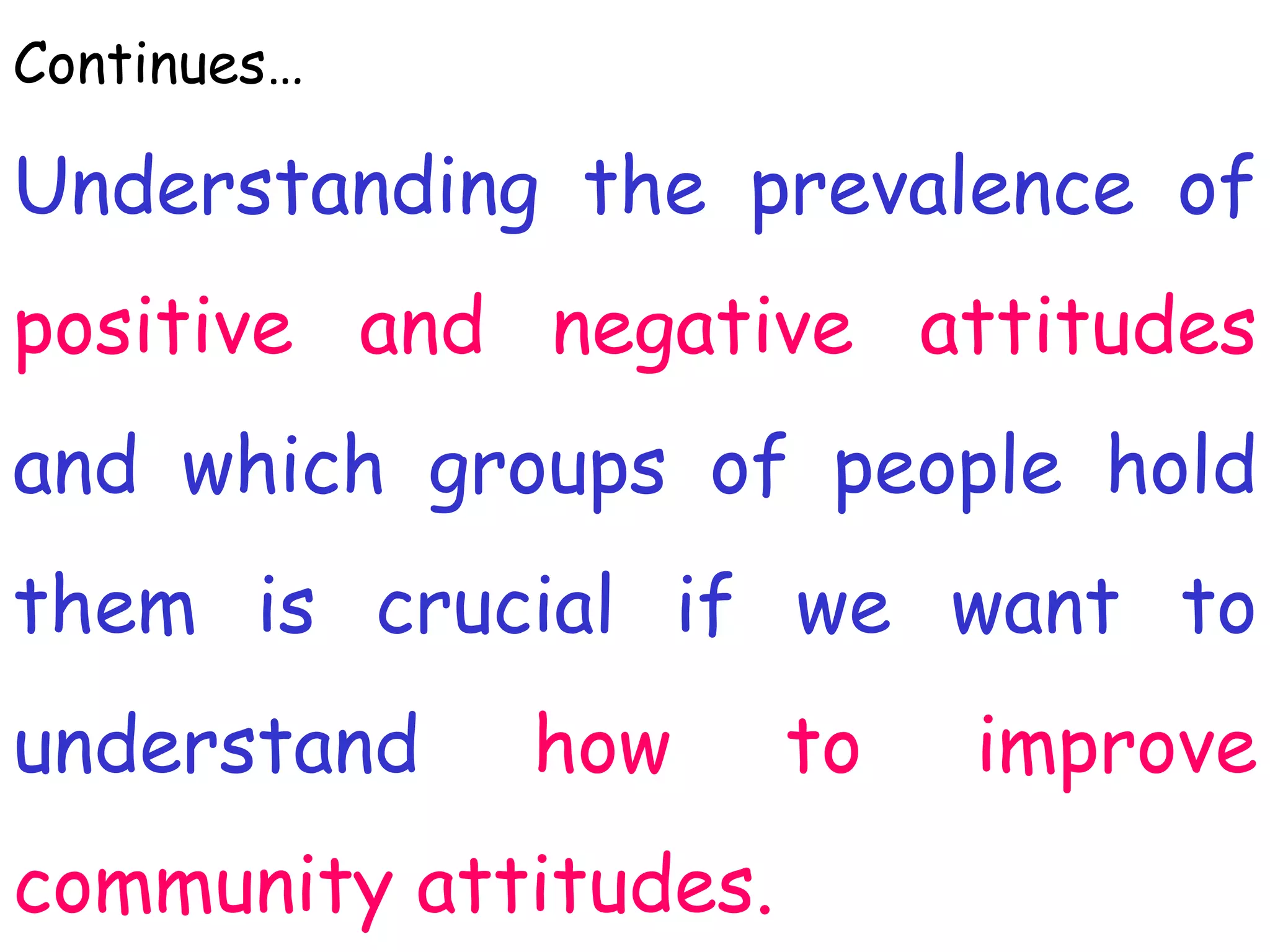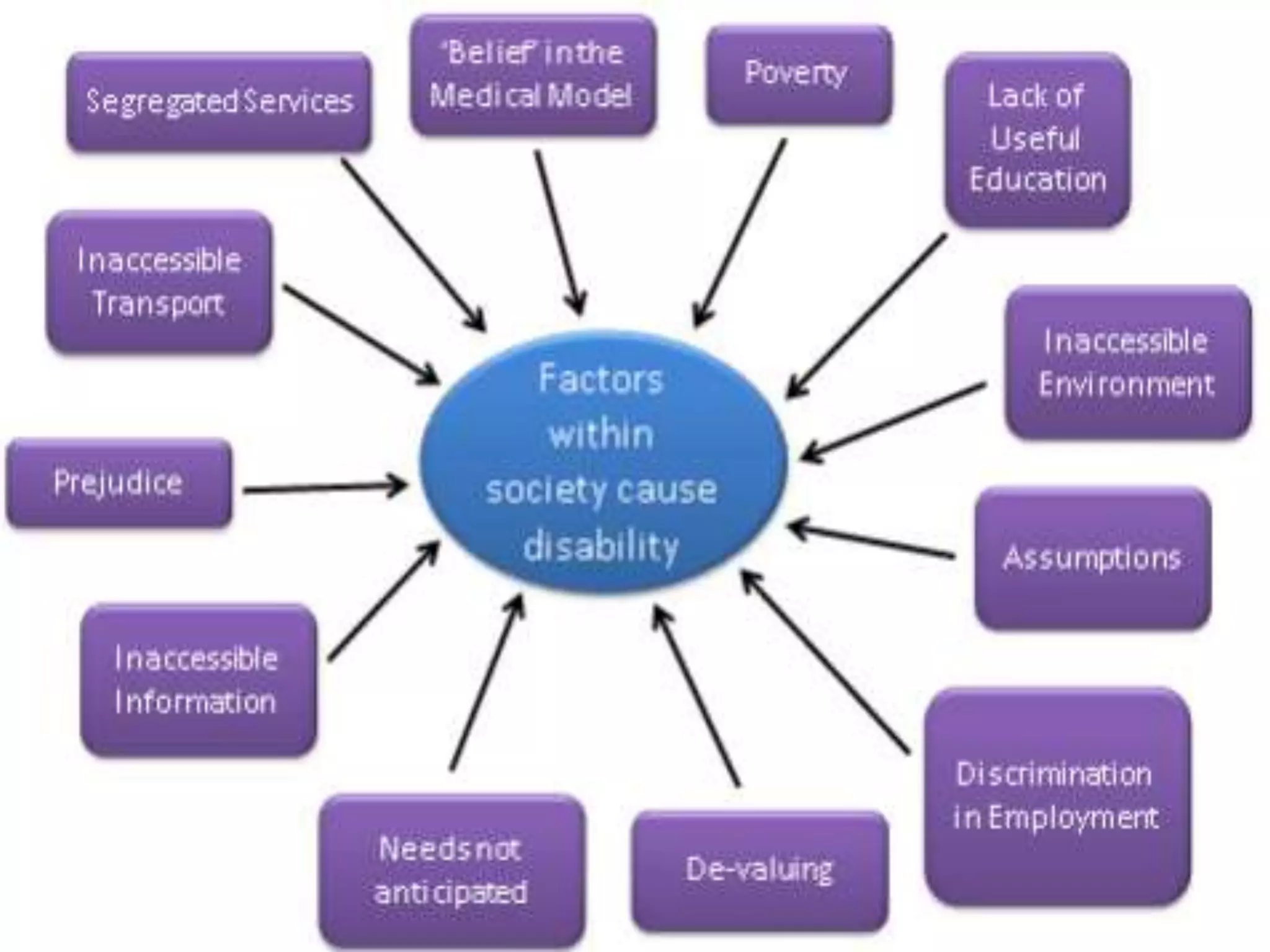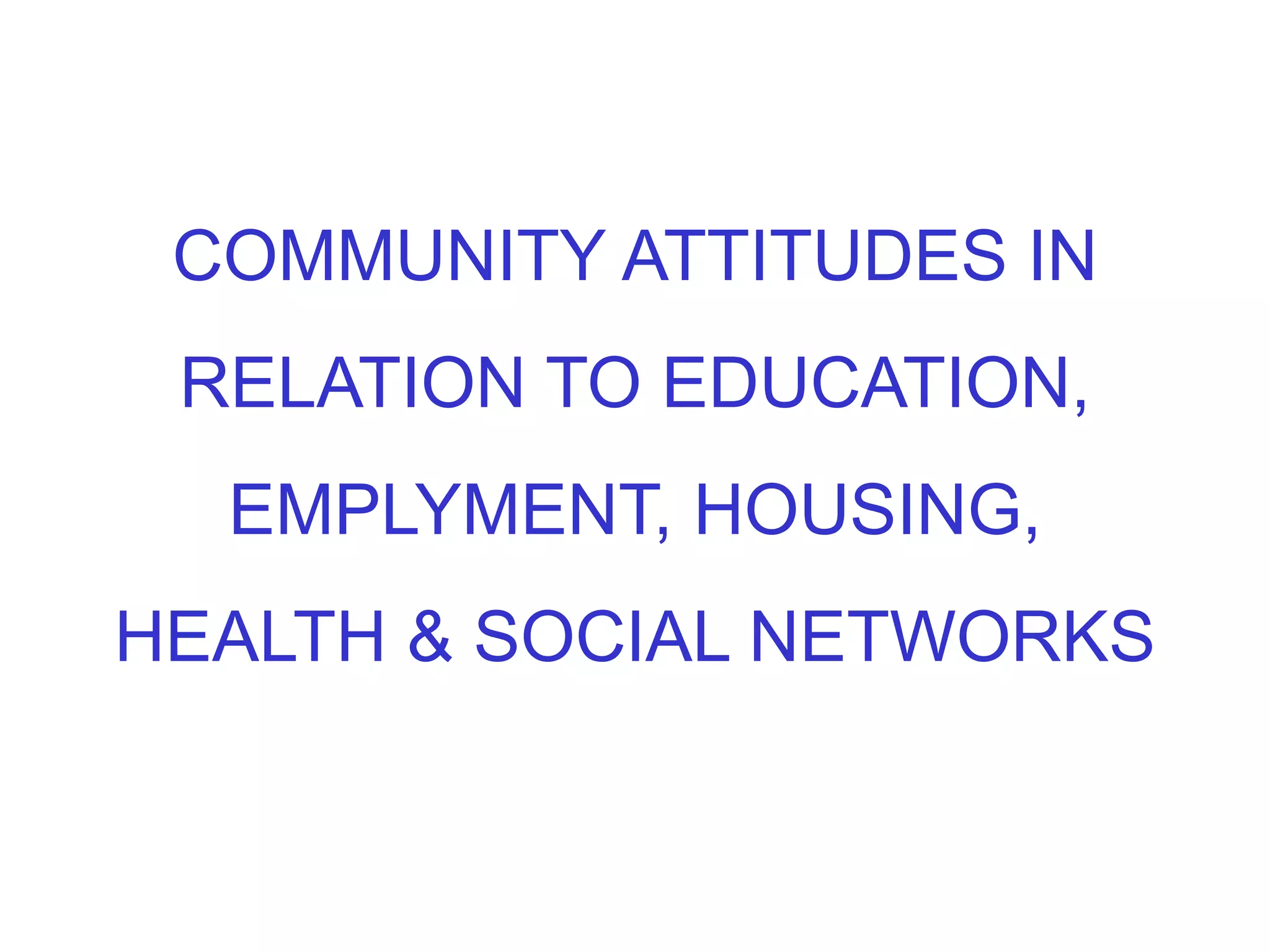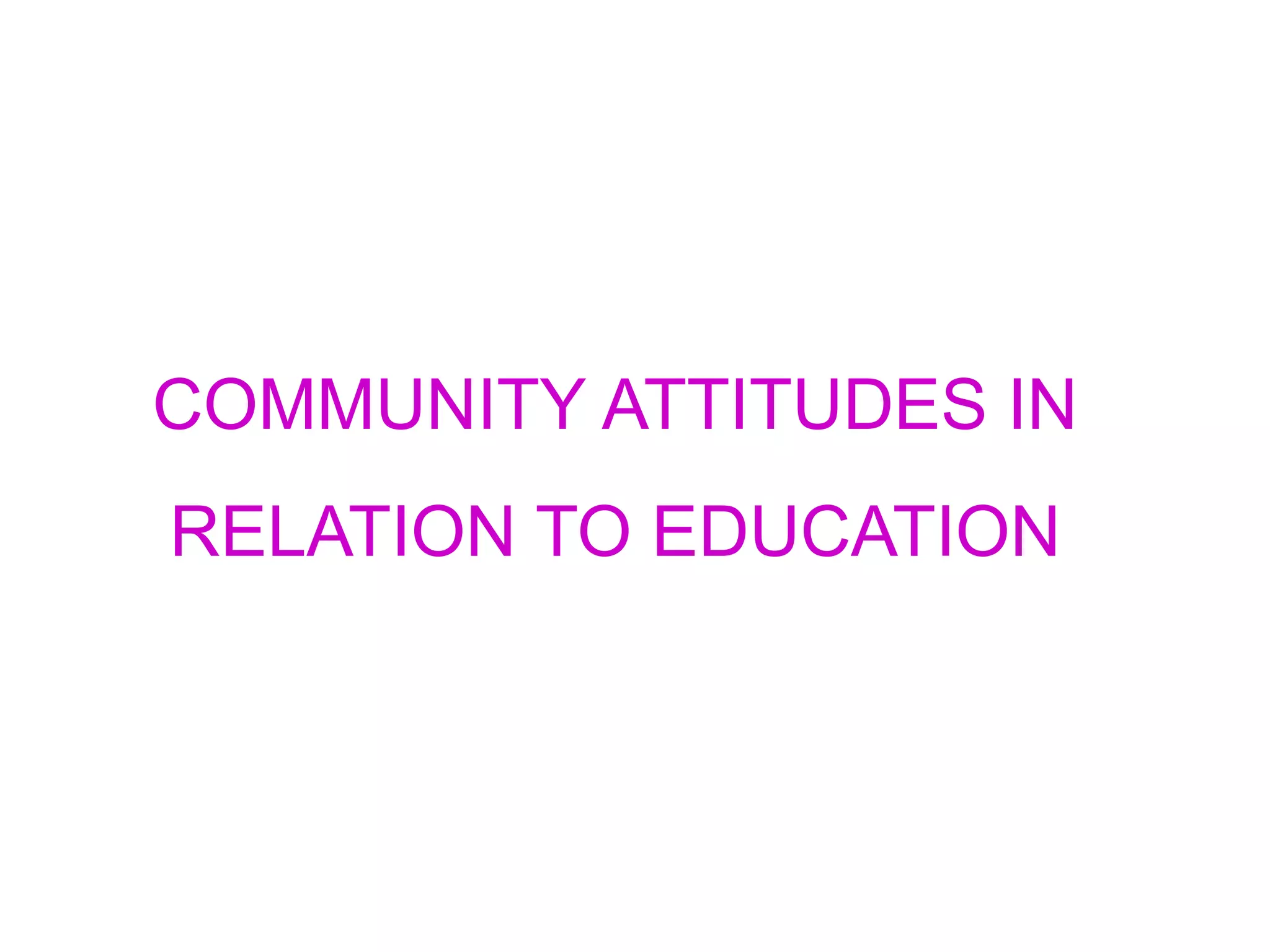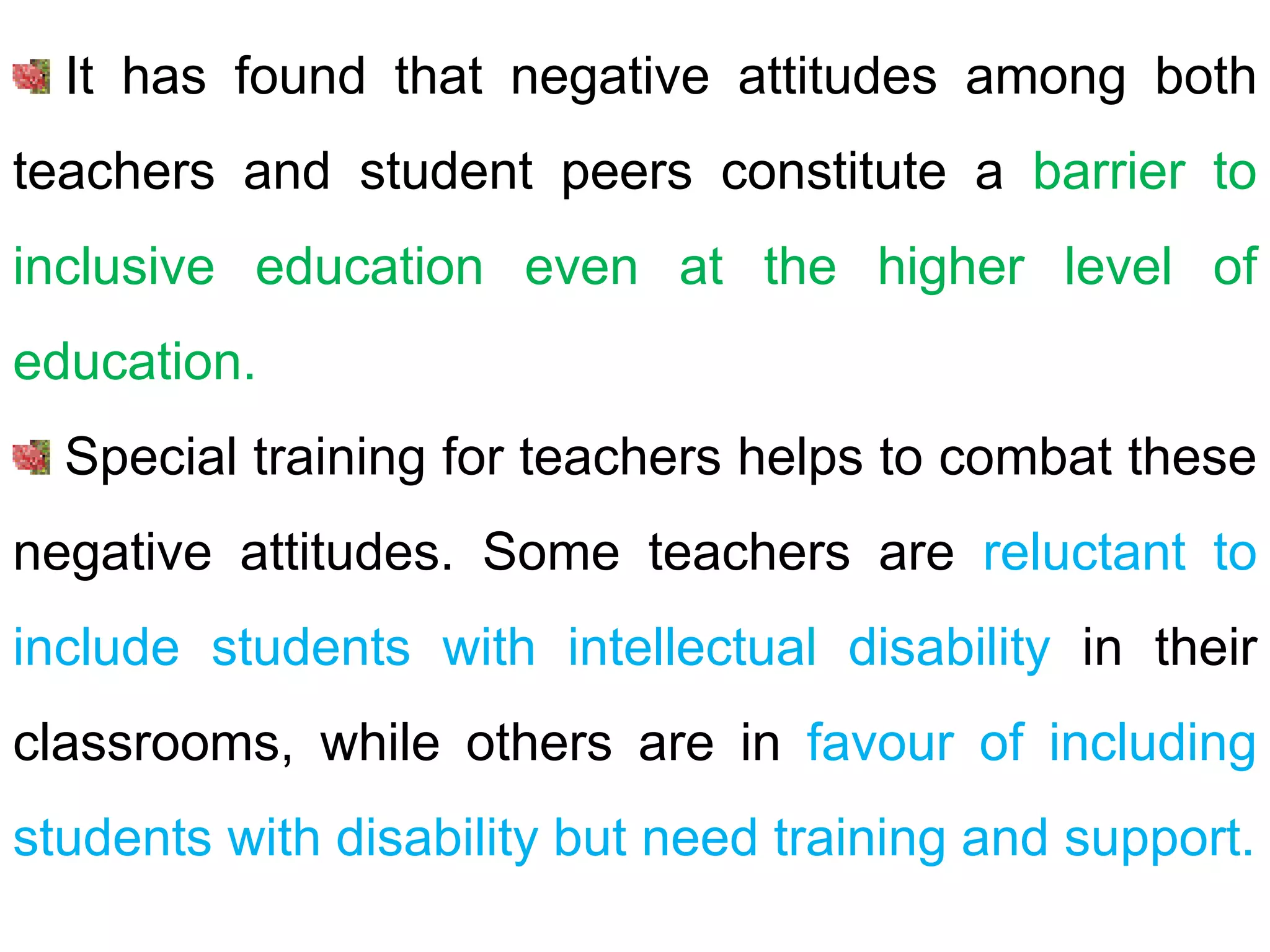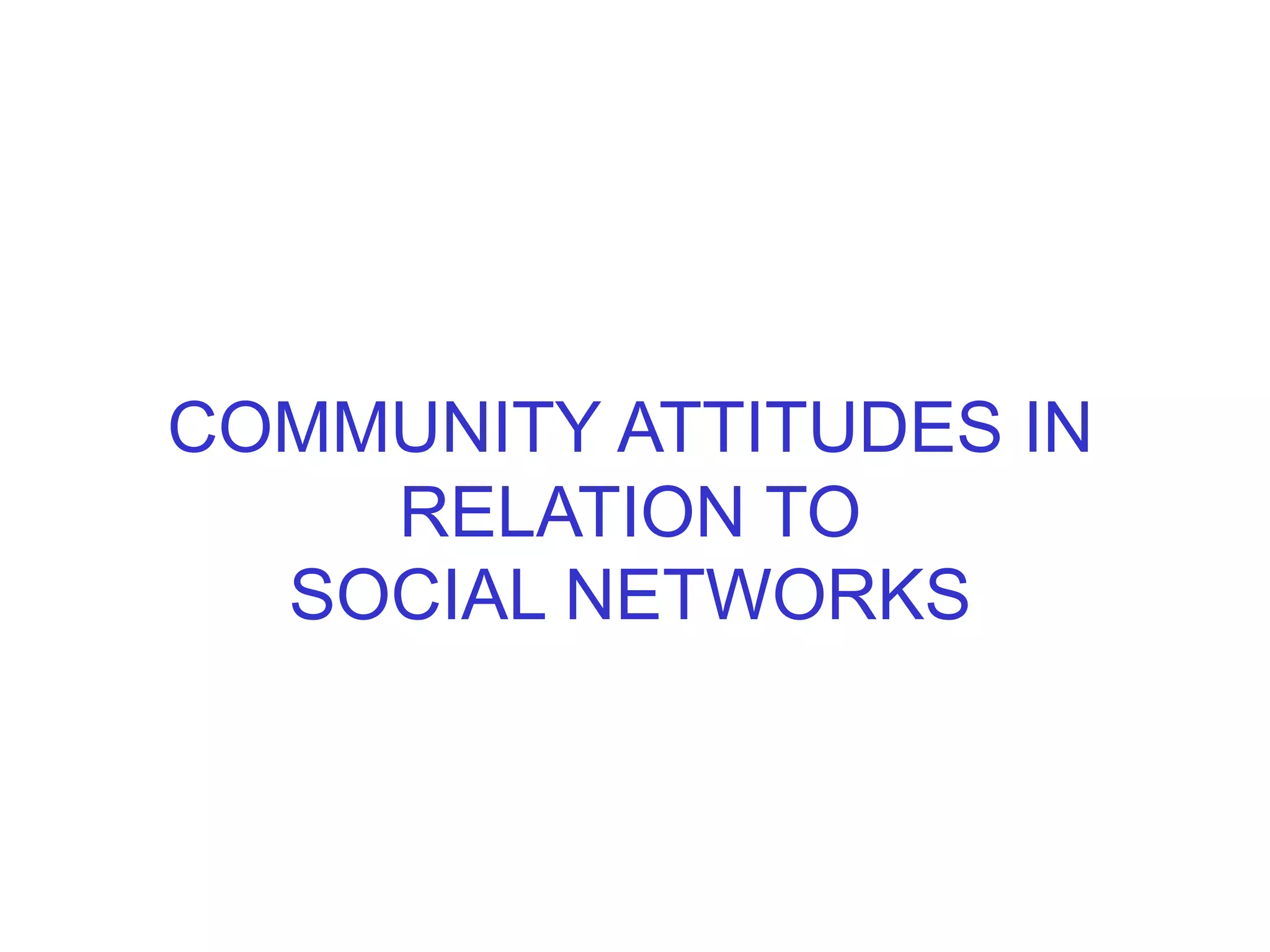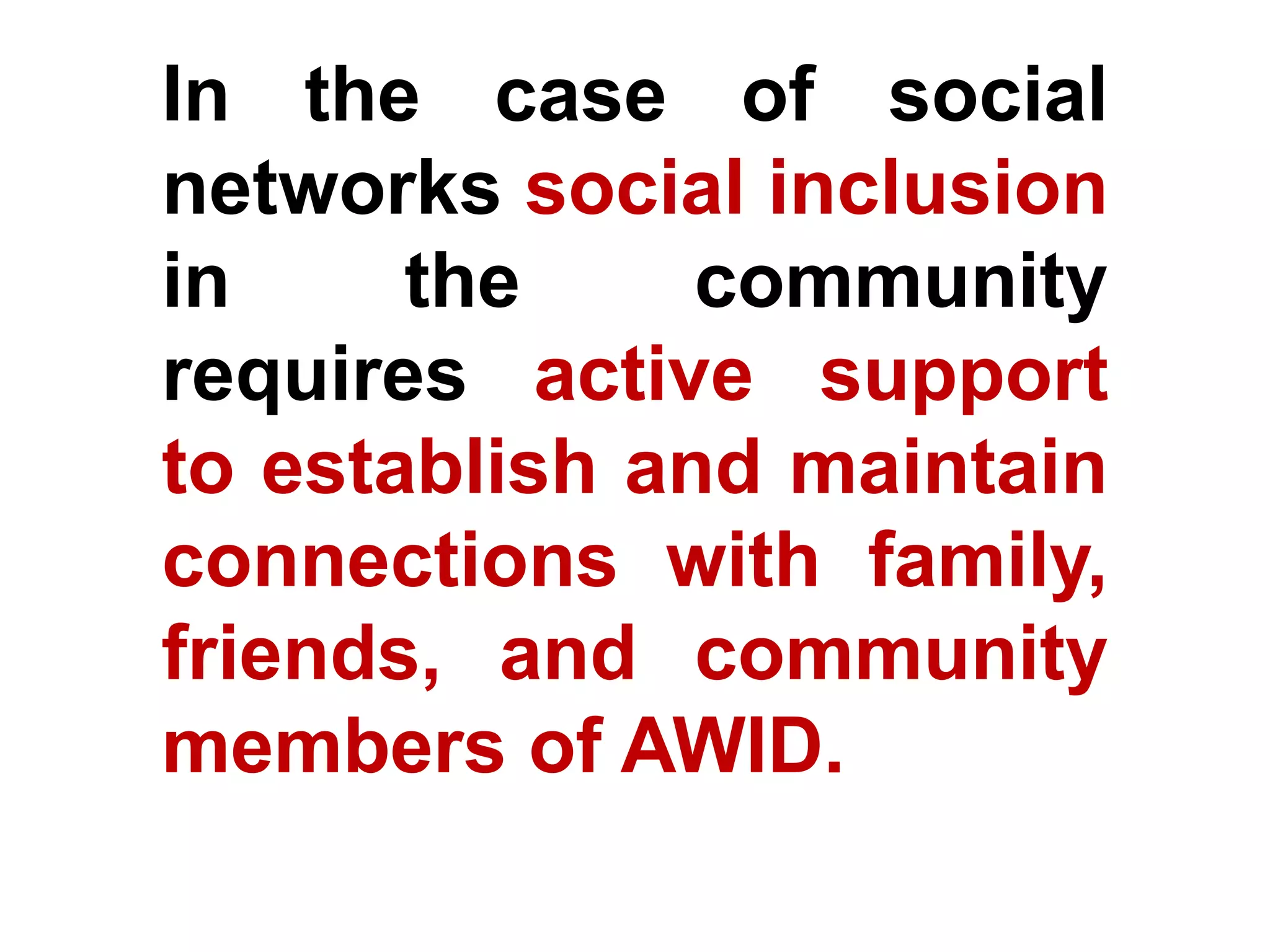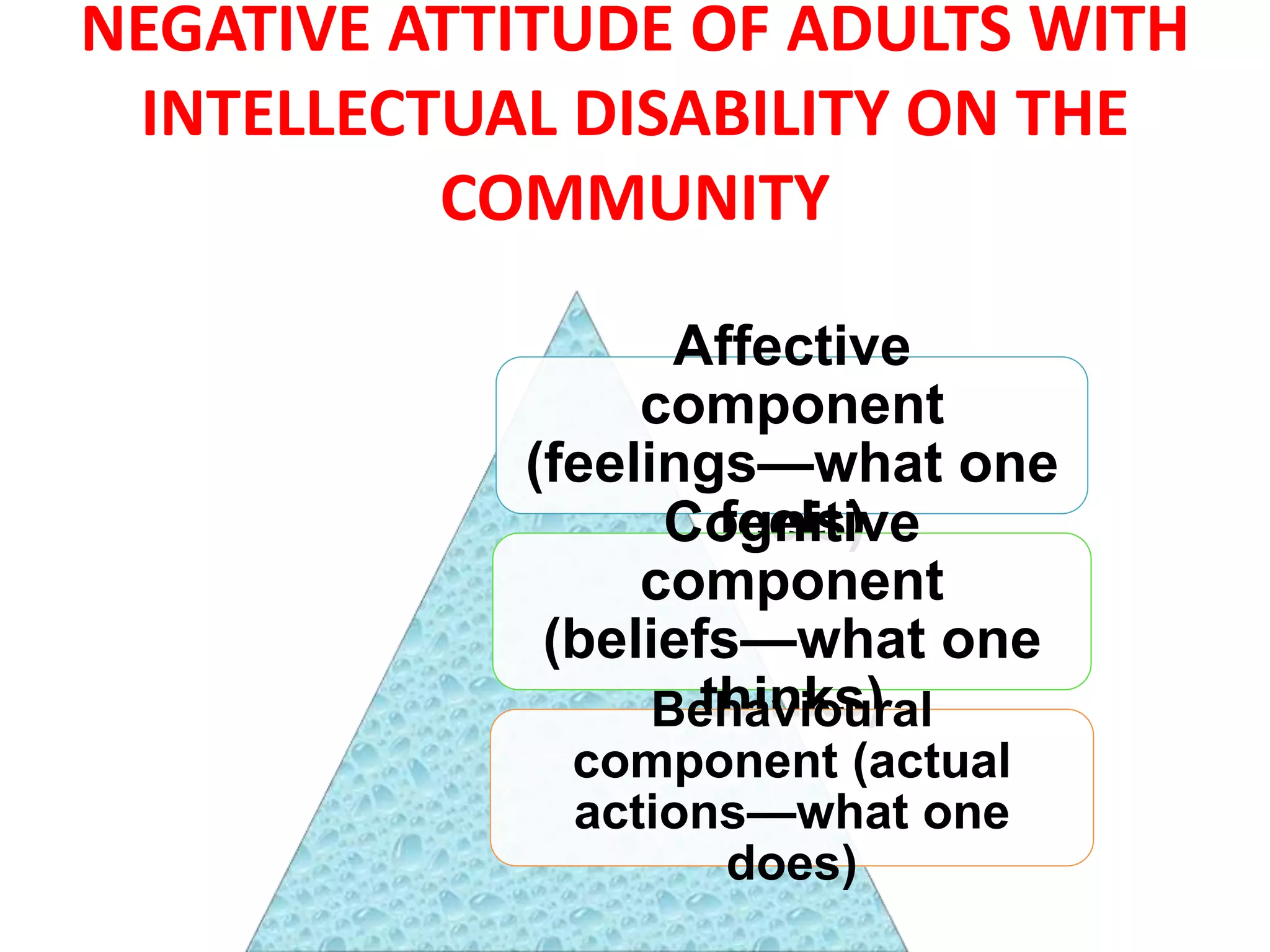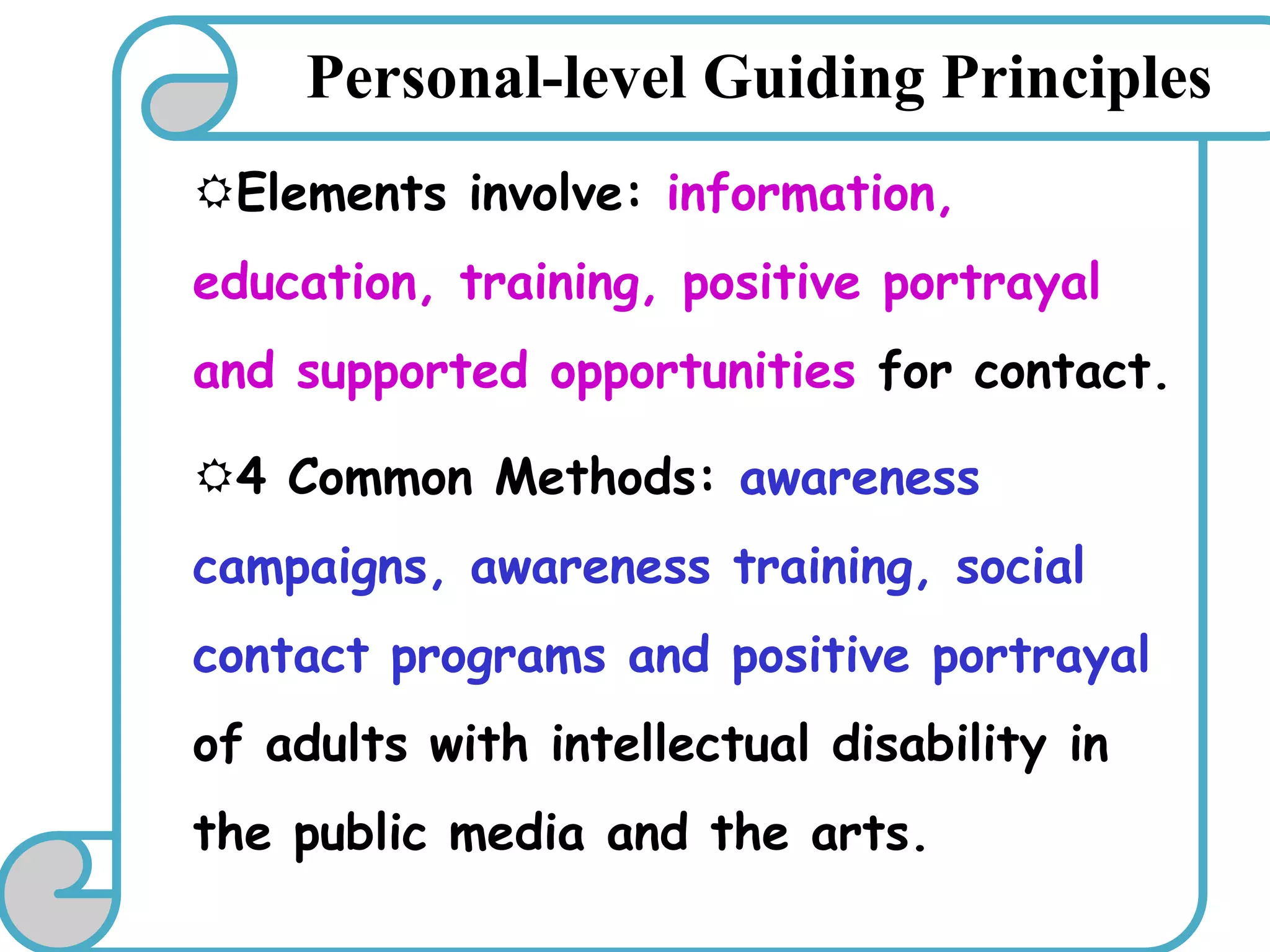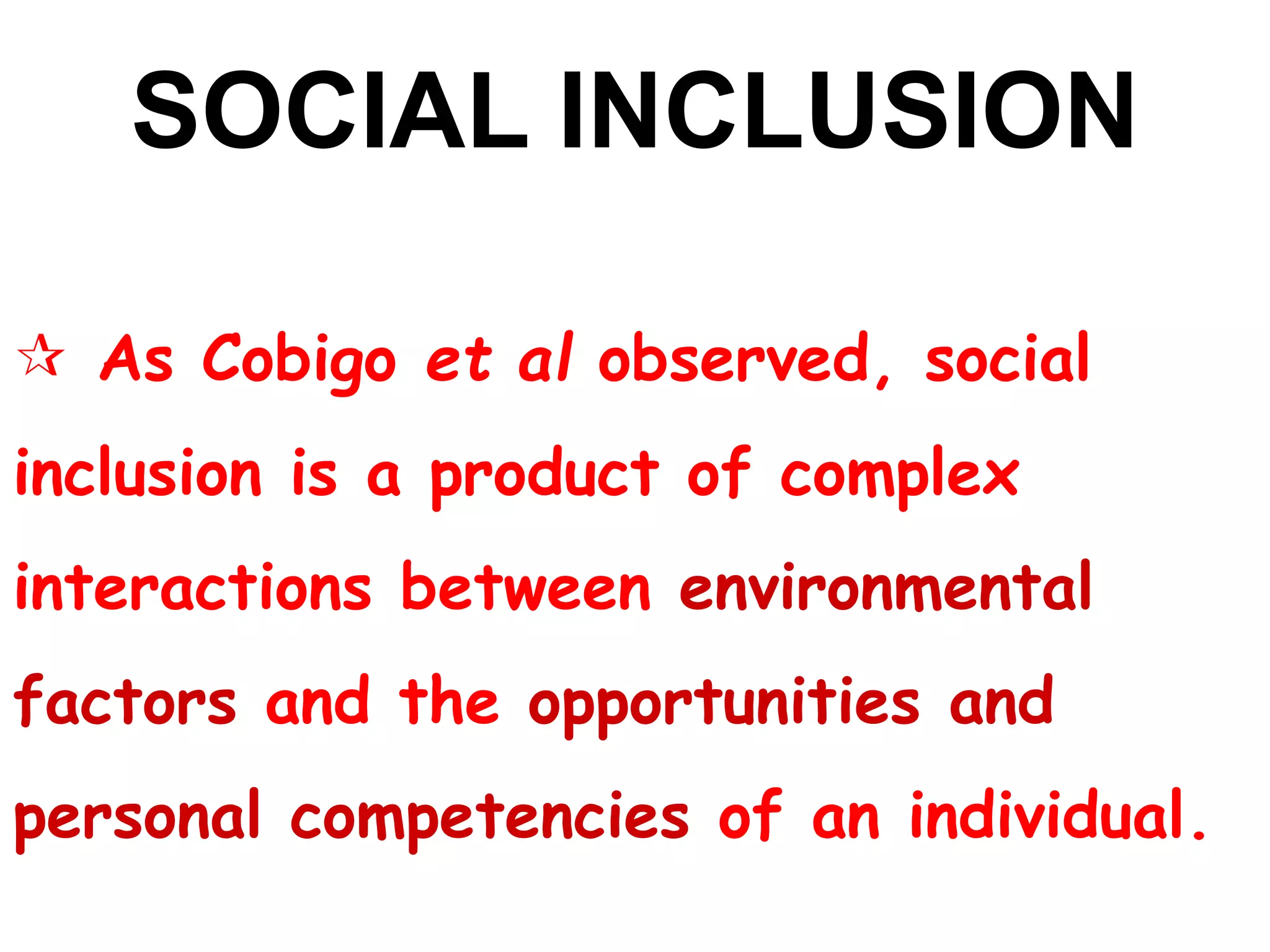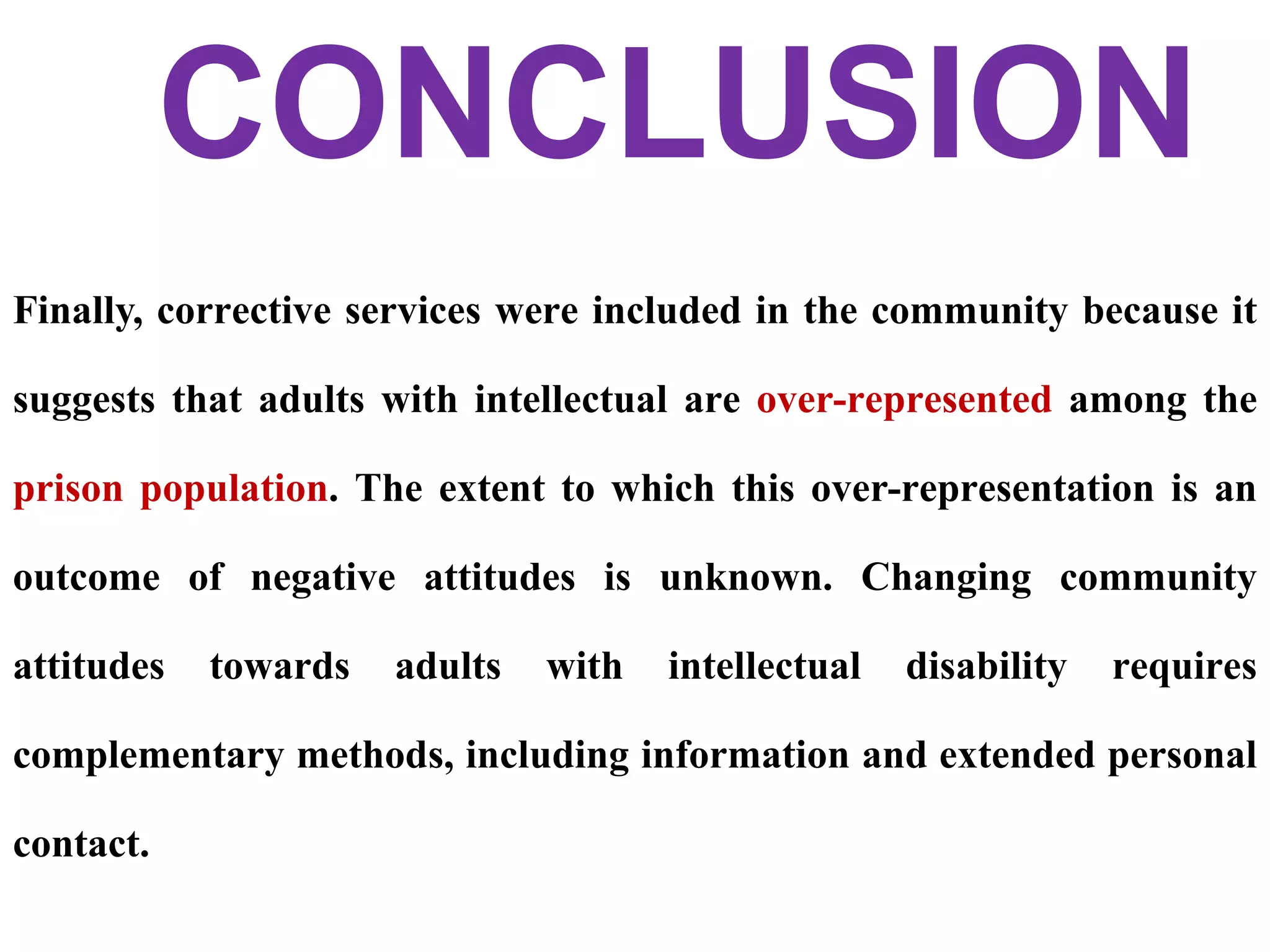This document discusses community attitudes toward adults with intellectual disabilities. It finds that negative attitudes pose major barriers to their education, employment, housing, health, and social networks. Teachers, employers, and neighbors sometimes lack awareness or have discomfort around inclusion. However, awareness training and social contact programs can help improve attitudes. Changing attitudes requires a multidimensional approach including information, education, positive portrayal, and supported opportunities for interaction and inclusion.
